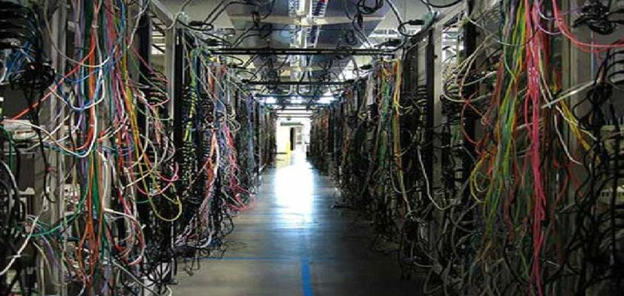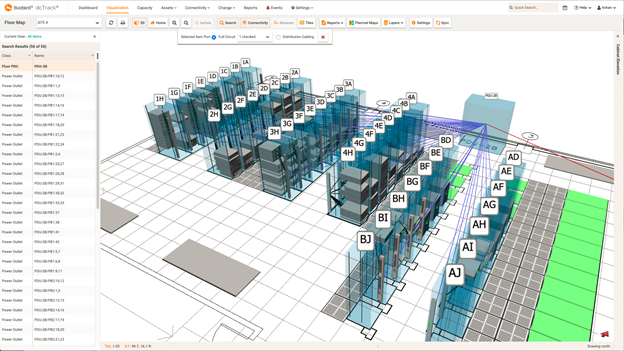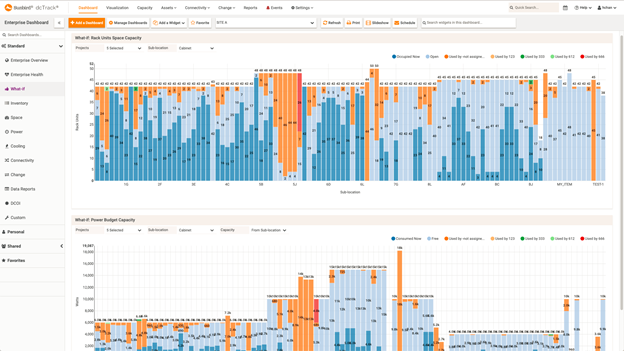Menu
- 130 King Street West, Suite 1800
- P.O. Box 427
- Toronto, ON, Canada M5X 1E3
- (416) 865-3392
- info@triparagon.com
With the flow of data rising exponentially, data center space and efficiency have become premium factors for businesses. All hardware and cabling designs must be modular and scalable, make optimal use of space and take cooling and energy consumption concerns into account.
Gone are the days of using point-to-point cabling and directly connecting devices to one another. This leads to cabling messes and increases cabling costs for every hardware refresh. In today’s high-density data center, a well-designed structured cabling system increases uptime, scalability and return on investment while simultaneously decreasing your technology footprint and operating expenses.

UNSTRUCTURED DATA CENTRE CABLING
A structured cabling system uses a Main Distribution Area, or MDA, into which all connections are run. The TIA-942 Standard defines the MDA as the central point of distribution for the data center structured cabling system.
It is the area where the consolidation to the main cross-connects and the switches and routers takes place. All active ports are replicated in a passive area with the MDA. This means active equipment is not affected or disturbed.
DATA CENTER cable management is a complex task. Often overlooked and neglected over time, improper cable management can wreak havoc across the entire enterprise and increase downtime. Poor data center cable management practices can result in “spaghetti” cabinets, difficult equipment installations, extended periods of troubleshooting and maintenance, and unsafe environments due to restricted airflow.
Tracking cabling in the data center with Excel spreadsheets and Visio diagrams no longer gets the job done today as sites grow, rack densities increase, and multi-hop connections introduce documentation complexity. Deploying Tri-Paragon’s Sunbird Data Center Infrastructure Management (DCIM) software addresses the key challenges of data center cable management.
While the initial design of the network or structured cabling infrastructure could be documented in advance by contractors, ongoing documentation of patching because of moves, adds, changes could prove challenging. Tri-Paragon’s DCIM ensures continued accuracy of the cable plant by allowing you to document the initial design as well as the multitude of ongoing changes to enable real-time transparency of physical network/patch port capacity at every cabinet in the white space.

Poor documentation leads to difficulties planning, provisioning, and maintaining equipment and troubleshooting connectivity issues. With a database of available and used patch or network switch port capacity in every rack, DCIM software makes it easy to search for capacity, plan rollouts, create work orders, provision equipment, and document patch cable installations down to the port level. A database driven tool with a web-front end allows anyone to easily view entire circuits and every hop to every device in between, down to individual physical ports on every device. You can even visualize circuit routes in 3D between all devices in an entire room.

Sunbird’s 3D data center floor map visualizations display data and power connectivity for multiple ports. You can view the full circuit or just the connections between the endpoints only.
Accurately measuring cable lengths before installation keeps the data center free of loose cables and reduces wasted cable, but often involves a time-consuming process of walking the data center floor with a tape measure. With CAD-level accuracy, DCIM software automatically measures all routes to ensure correct cable lengths are installed, avoiding rework or downtime when changes are implemented.
The team responsible for the equipment and cable installation may be different than the team who plans infrastructure deployments, and insufficient instructions in the build sheet can lead to incorrect installations and connections.
DCIM software can radically simplify data center cable management by automatically validating the compatibility of your planned connections before allowing you to make a change. DCIM software can also provide clear work orders with cabinet elevation, equipment specifications pulled from the software’s database, and cabling instructions to ensure that the work is done accurately the first time.
With DCIM software, dashboards, reports, and what-if analysis are readily available, helping you plan by seeing the impact of planned additions and decommissions on connectivity capacity. Overcome the challenges of data center cabling with best practices and a modern DCIM solution, and you will be well on your way to driving sustainable behaviors that foster precise and accurate cable planning, installation, and management.

The What-If Dashboard provides widgets that show the potential impact of a change in your data center on a per-project basis.